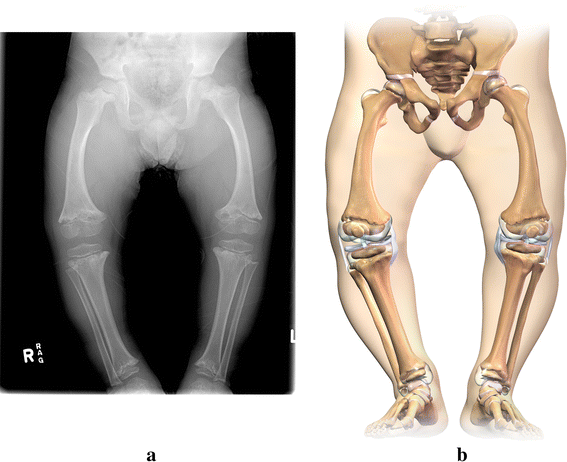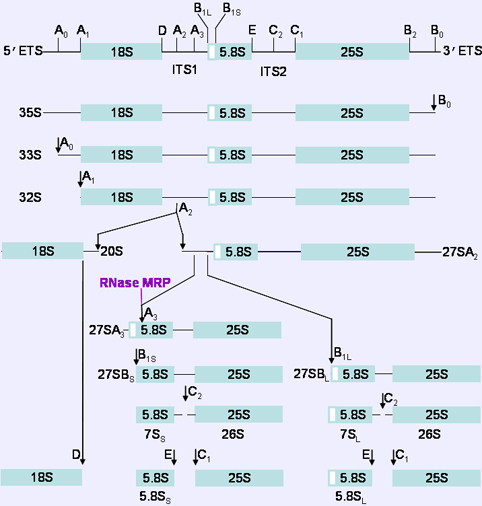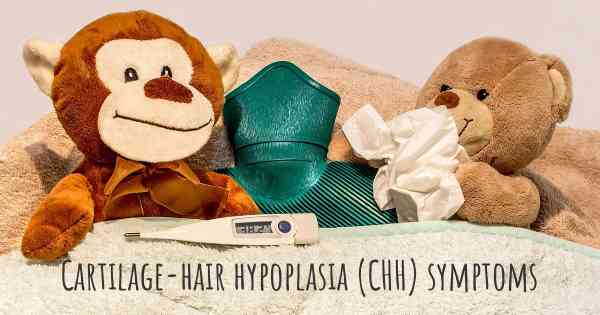Table Of Content

Immunodeficiency, when severe, may require bone marrow transplantation but this does not have any effect on the growth deficiency. The age distribution of the patients at initial visit is shown in Fig. The clinical findings seen in our population of 135 patients are recorded in Table 1 in order of their frequency.
Validation of Risk Factors for Early Mortality in Cartilage-Hair Hypoplasia
Immune dysregulation, lymphoid malignancy, and autoimmunity were important features in this cohort. Thirteen patients were transplanted in early childhood (∼ 2.5 years). Of 16 patients, 10 (62.5%) were long-term survivors, with a median follow-up of 7 years. T-lymphocyte numbers and function have normalized, and autoimmunity has resolved in all survivors. HSCT should be considered in CHH patients with severe immunodeficiency/autoimmunity, before the development of severe infections, major organ damage, or malignancy might jeopardize the outcome of HSCT and the quality of life in these patients. The extent of the immune deficiency in cartilage-hair hypoplasia varies from mild to severe.
Genetic and Rare Diseases Information Center
Learn about symptoms, cause, support, and research for a rare disease. Any anomaly in the formation of bone or of a bony substance, or the conversion of fibrous tissue or of cartilage into bone or a bony substance.
‘Mini-Me’ actor Verne Troyer’s death was a suicide, coroner says - LA Daily News
‘Mini-Me’ actor Verne Troyer’s death was a suicide, coroner says.
Posted: Wed, 10 Oct 2018 07:00:00 GMT [source]
Find Care at Nemours
Indication for HSCT, age, donor type, conditioning regimen, immune-reconstitution, post-HSCT complications (including graft-versus-host disease [GVHD] and growth, orthopedic, and lung problems), and outcomes were reviewed from medical records. Patients with a severe T-cell immunodeficiency with or without concomitant B-cell immunodeficiency are given the same treatment as patients with severe combined immunodeficiency (SCID). Once the RMRP pathogenic variants have been identified in an affected family member, prenatal and preimplantation genetic testing for a CHH-AD spectrum disorder are possible. Genetic counseling is the process of providing individuals and families withinformation on the nature, mode(s) of inheritance, and implications of genetic disorders to help themmake informed medical and personal decisions.
Some people with cartilage-hair hypoplasia experience gastrointestinal problems. These problems may include an inability to properly absorb nutrients or intolerance of a protein called gluten found in wheat and other grains (celiac disease). Affected individuals may have Hirschsprung disease, an intestinal disorder that causes severe constipation, intestinal blockage, and enlargement of the colon.
GeneReview Scope

Widened metaphyses, short long bones, elongated fibulae, and anterior angulation of the sternum are all signs of CHH. Hair hypoplasia can also contribute a clue to the diagnosis; but having typical hair does not exclude the diagnosis of CHH. Mutations in the RMRP gene likely result in the production of a noncoding RNA that is unstable.

Genetic Testing Information
This could have a major impact on the survival and quality of life of young CHH patients. In the meantime, cohort studies with genotype-phenotype correlations are urgently needed to address the question that patients will benefit most from the procedure. We found the Finnish major mutation G at nucleotide 70 (A70G) to be homozygous in 74 families (Table 1).
PATIENT & FAMILY RESOURCES
Swift Current mom shares experiences caring for sick child in new book - CBC.ca
Swift Current mom shares experiences caring for sick child in new book.
Posted: Wed, 29 Mar 2017 07:00:00 GMT [source]
Severe anemia in adolescents and adults with CHH can be the presenting symptom of malignancy and may require extensive investigations with bone marrow evaluation and imaging studies. Gene-targeted deletion/duplication analysis detects intragenic deletions or duplications. Methods used may include a range of techniques such as quantitative PCR, long-range PCR, multiplex ligation-dependent probe amplification (MLPA), and a gene-targeted microarray designed to detect single-exon deletions or duplications.
Biallelic variants in POLR3GL cause endosteal hyperostosis and oligodontia
Underlying pathogenic variants in RMRP and severity of preceding immunodeficiency varied and did not correlate with the risk of malignancy. In conclusion, different insertions and duplications in the promoter region and a large number of mutations in the RMRP transcript can cause CHH. Our findings clearly support the hypothesis that a single ancient nucleotide 70 G mutation in RMRP causes most of the Finnish CHH cases and contributes to the majority of the non-Finnish cases, possibly also including the Amish enrichment. It is very likely that all of the nucleotide 70G mutations reported in the study represent a single occurrence of this base substitution. The ancient A70G mutation was introduced to Finland by the founder individuals and is highly enriched in the current population.
Mäkitie et al. demonstrated that the growth retardation in CHH correlates well with the severity of the metaphyseal changes [18, 68]. Ray and Dorst [66] reported that one-third of elbows showed lateral subluxation or dislocation of the radial head. Histologic examination was performed in one of McKusick’s cases and demonstrated paucity of cartilage cells and deficiency in columnar organization that was interpreted as cartilage hypoplasia. We could find no infrastructural histopathologic information in the literature to date. Clinical autoimmunity is common, and its spectrum is broad in individuals with CHH [Vakkilainen et al 2018]. Autoimmune complications and a form of severe allergic reaction have been rarely observed in individuals with CHH; however, the pathophysiology is still unknown [Bacchetta et al 2009, Narra & Shearer 2009].
The means-of-moments estimator calculations suffer the same reservations and, furthermore, do not account for the population parameters and are even more sensitive to assumed recombination rate. Cartilage hair hypoplasia (CHH) is a rare metaphyseal chondrodysplasia characterized by short stature and short limbs, found primarily in Amish and Finnish populations. Cartilage hair hypoplasia is caused by mutations in the RMRP gene located on chromosome 9p13.3. The disorder has several characteristic orthopaedic manifestations, including joint laxity, limited elbow extension, ankle varus, and genu varum.
When the DNA samples of the parents were available, we genotyped them and reconstructed haplotypes, segregating with the different RMRP mutations. The major mutation always segregated with the Finnish major haplotype (in this study),12 the shortest haplotype being less than 29 kb in length between markers D13 and a base substitution polymorphism in the first exon of MN/CA9 (data not shown). The minor mutation G262T and the 10 bp duplication at −13 segregated with their own haplotypes as depicted in Figure 1A. All minor haplotypes were more than 200 kb in length and longer than a large proportion of the major haplotypes suggesting a more recent occurrence of these mutations. Diagnosis of CHH was established on classical clinical features in all but 2 patients.
Among adults, there is higher incidence of hematologic malignancy including lymphoma, squamous cell carcinoma, and leukemia. Autoimmune disease, like autoimmune hemolytic anemia, immune thrombocytopenia, and juvenile idiopathic arthritis, is also reported in the disease. Granulomatous inflammation of the skin and visceral organ is present and responsive to various immune-suppressive medications. Some patients with less common cellular immunodeficiencies may have severe immunodeficiency with early onset and significant morbidity and mortality, while others have only mild problems.
Bottom left panel shows height corresponding with the age in females, and the right panel shows weight corresponding with age. The spectrum of orthopaedic manifestations typically and frequently seen in CHH has been elucidated in this paper based on this study of the largest group of patients so far reported in the North American literature. Thirty-four percent of 95 patients with the condition had undergone surgical realignment osteotomies of the long bones of the lower extremities. The orthopaedic manifestations that have clinical significance are related to the metaphyseal chondrodysplasia resulting in bowing, angulation, and rotational deformities. Femoral bowing and coxa vara are occasionally severe enough to warrant surgical intervention by osteotomy and realignment. In the lower leg, the shortening and bowing of the tibia and the ankle varus appears directly related to the relative overgrowth of the fibula.

No comments:
Post a Comment